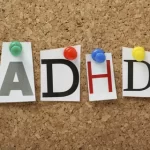The approval of the series of stimulus checks by Congress starting with the pandemic led to a flood of federal stimulus money being pumped into the national economy. It was the largest as around $5 trillion went to individuals, families, local government bodies, businesses, and various sectors like education and tourism.
Everyone from individual families and mom-and-pop stores to stage governments benefitted from this economic largesse, the biggest aid package in recorded history.
Economists realize that these periodic economic jumpstarts helped the US economy recover way faster than it did during previous instances of recession. Despite it being the biggest social and economic setback ever, the pandemic recession proved to be the shortest on record and lasted a mere three months.
Economists such as Louise Sheiner of the Brookings Institution say that the money ensured that when the economy finally reopened after the initial lockdown period, people would have money in their hands, and their credit ratings would be intact as they would not have defaulted on their credit cards or other loans, and they were not in danger of being evicted, or their kids going homeless and hungry.
This is the most that most families hoped for post the pandemic. And the successive stimulus checks ensured just that. And along with the support that the Rescue Act afforded businesses, the economy was immediately back on rails even as the world opened up once again.
The money spent on vaccines and other measures to fight the pandemic was also justified as people were protected fast and in large numbers. This negated the potential danger posed to the open economy by the pandemic and gave workers the confidence to return to their jobs. But it would be some time before people mustered up the courage to go back to their normal ways, given the damage the virus wrought in the lives of everyone it touched.
A year and more after the Rescue Plan was set in motion, the actual impact remains unclear, especially the negative part. While it succeeded in doing just what it was intended to do, which was jumpstarting the economy post the pandemic, the blame it took for the inflation is largely unjustified.
Supporting The Economy And The People Affected During The Pandemic
The $1.9T that went in just the third phase of the stimulus support groups as varied as gig workers, teachers, regular factory workers, and the jobless. Self-employed groups like the gig workers who would not normally qualify for unemployment support were also eligible for the first time.
Individuals and families were the biggest beneficiaries and received the largest chunk of the aid. Over 150M individuals and households received direct stimulus checks. Around $62B was finally spent just to expand the food stamp program under SNAP, the Supplemental Nutrition Assistance Program.
Avoiding A Total Collapse Of The Economy During The Pandemic
Close to $2T went into the economy in the third phase of stimulus support from the federal administration. This helped avert the economic collapse that would have been considered normal given the impact the pandemic had on every aspect of human life and the economy.
It aided individuals and families by ensuring that they had enough money to put food on the table, pay their utility bills, repay loans, pay their rent, and even spend on non-essential goods and set aside a part of it for future use.
Millions of individuals and families who lived paycheck-to-paycheck were able to avoid falling into poverty for the first time despite losing their jobs across sectors. The largest beneficiaries were the poorest households and those with children, the most vulnerable groups in society.
Accusation Of Fueling Inflation Hyped Up And Misplaced
The Republican opposition has constantly attacked President Biden for being responsible for the inflation that reached record levels in the second quarter of 2022. They also blamed the generous support for the shortage of workers, saying that the labor shortage was caused by workers having sufficient money in hand to avoid venturing out during the pandemic.
Several Republican states ended the extended unemployment benefits before they expired on September 5, 2021, to force workers back to work. But studies have revealed that the extra benefits played a minor role in keeping workers away from the workplace. The US economy has already regained close to 90% of the 22M jobs that were lost immediately after the pandemic.
Will State Stimulus Checks Worsen Inflation?
The state stimulus checks have been a measure adopted by around 18 states, mostly Democratic, to counter the effect of the record inflation that has crept in to make life unbearable for most Americans. Despite the initial boom in the economy post the pandemic, prices began to rise in the third quarter as there was an acute mismatch in demand and supply.
People were flush with funds from the successive stimulus checks and other supports including the extended unemployment benefits and the enhanced Child Tax Credit stimulus checks. There was also a shift in demand from services to goods. But the supply issues continued to plague the economy, aggravated by the shortage of factory workers. Manufacturing took a severe beating and there were lesser goods on the shelves.
This naturally led to a rise in prices across sectors. The war in Europe further compounded matters and led to the price of gasoline almost doubling in two years. This affected all prices including food and other essentials.
States have moved in quickly to provide inflation relief payments that they hope will help residents tide over the crisis before the economy cools down.
Maine and New Mexico were the first among states to go ahead with stimulus checks for their residents. Maine has been the more generous of the states and has given an $850 stimulus check to individuals and double that to joint income tax filers.
New Mexico games the payments as rebates for three months starting June. California and Florida are the latest among states to announce stimulus checks for their residents. While California is giving payments to around 23 million residents, Florida has restricted its payments to families with children and sent a $450 stimulus check. The list includes related and non-related caregivers.
California will spend around $9.5B of its $97B budget surplus and families earning up to $250,000 will receive a stimulus check, though the payments are tapered for high earners. Joint filers earning up to $150,000 and declaring at least one dependent will get a total of $1,050.






